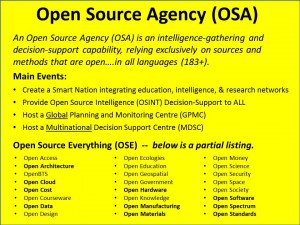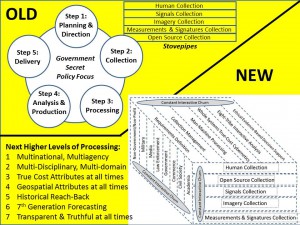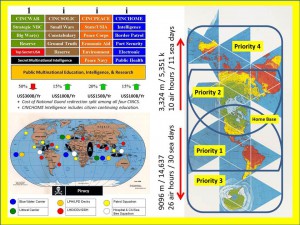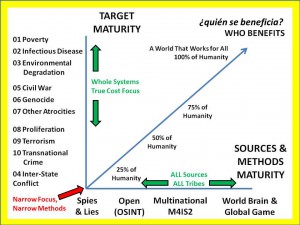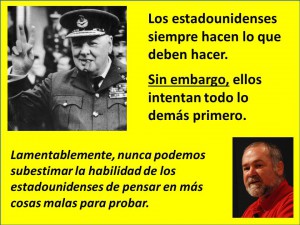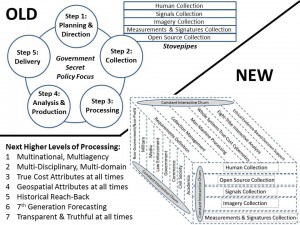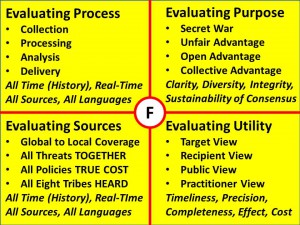
Slide: Evaluating Intelligence 1.1
Caption: Robert David Steele, “Graphic: Evaluating Intelligence (Decision-Support) – Four Aspects 1.1,” Phi Beta Iota the Public Intelligence Blog, 30 January 2013 Updated to add Real-Time 1 February 2013.
Inspired by: Dover, Robert and Milja Kurki (2013), “Unwritten Assumptions: The Role of Theories in the Study of Intelligence,” UNPUBLISHED DRAFT
See Also:
Graphic: IADB 21st Century Intelligence
Graphic: IADB Old vs. New Intelligence Process
Graphic: US Intelligence Six Fundamental Failures Over 25 Years – $1.25 Trillion

